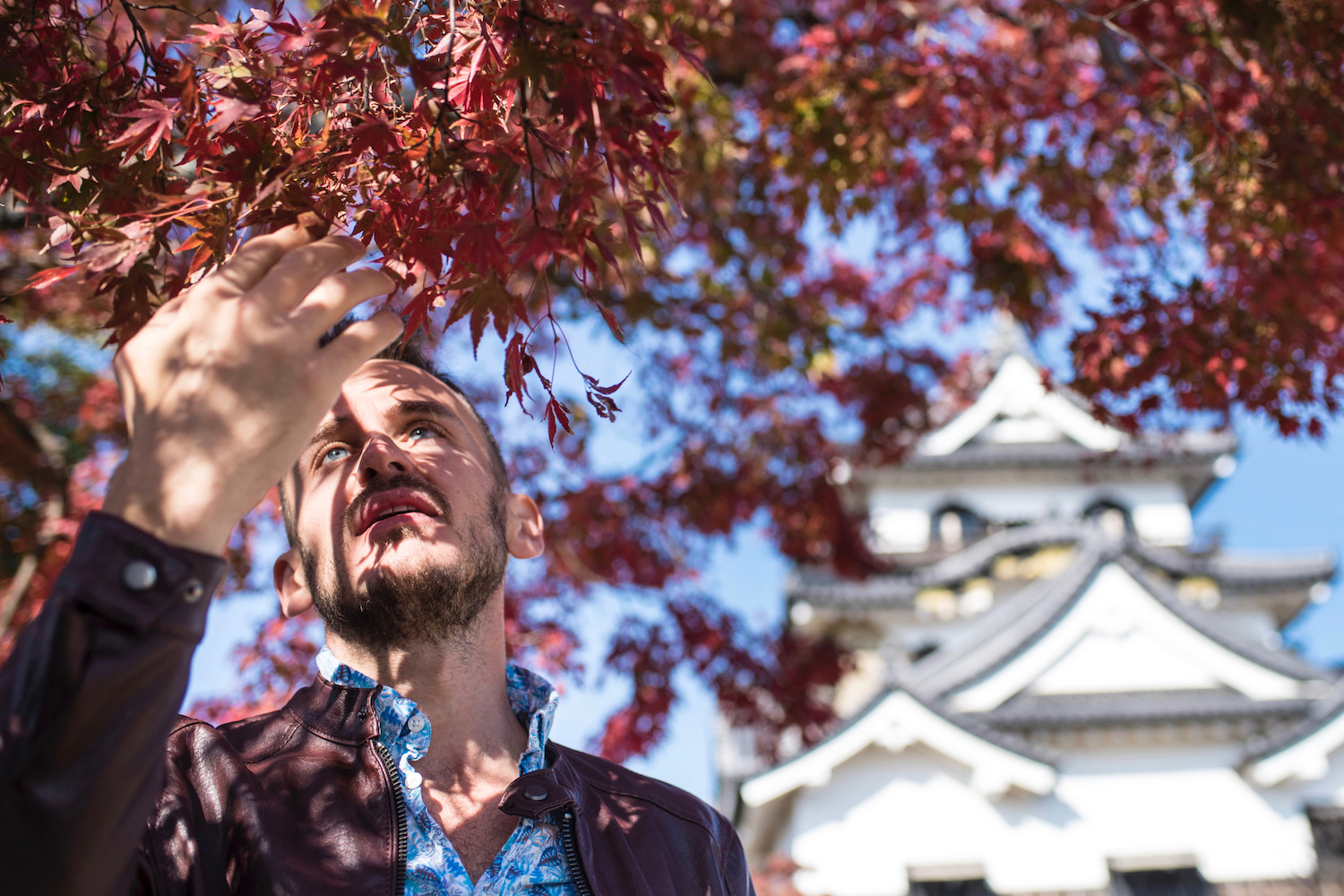I decided to begin this morning’s trip to Hikone Castle earlier than planned. It wasn’t until I was about a block from Kyoto Station, however, and I opened the HyperDia app to see what time the next train to Shiga Prefecture left, that I realized just how imminent my departure would be: In two minutes, if I could make.
With a can of sugar-free Red Bull in one hand and a chocolate-flavored Melonpan bread in the other, I dashed through the entry gate and sprinted over tracks 1 and 2, rushing through the doors of the Maibara-bound train with my Family Mart breakfast—with just seconds to spare.
So preoccupied with not missing the train to Hikone Station was I that I forgot how I’d intended to spend the six o’clock hour, back when I thought I’d be in the city. To my chagrin, the sunrise I should’ve been watching from the Kyoto Station SkyDeck was brilliant and beautiful—I’d hoped it would be ugly, so I wouldn’t regret having missed it.
My Arachnid Friend
Of course, Hikone Castle wasn’t my first destination today. I wanted to visit a fortress further north along the eastern shore of Lake Biwa in Nagahama, though I felt slightly less enthused about this once I realized that its current structure only dates back to 1983.
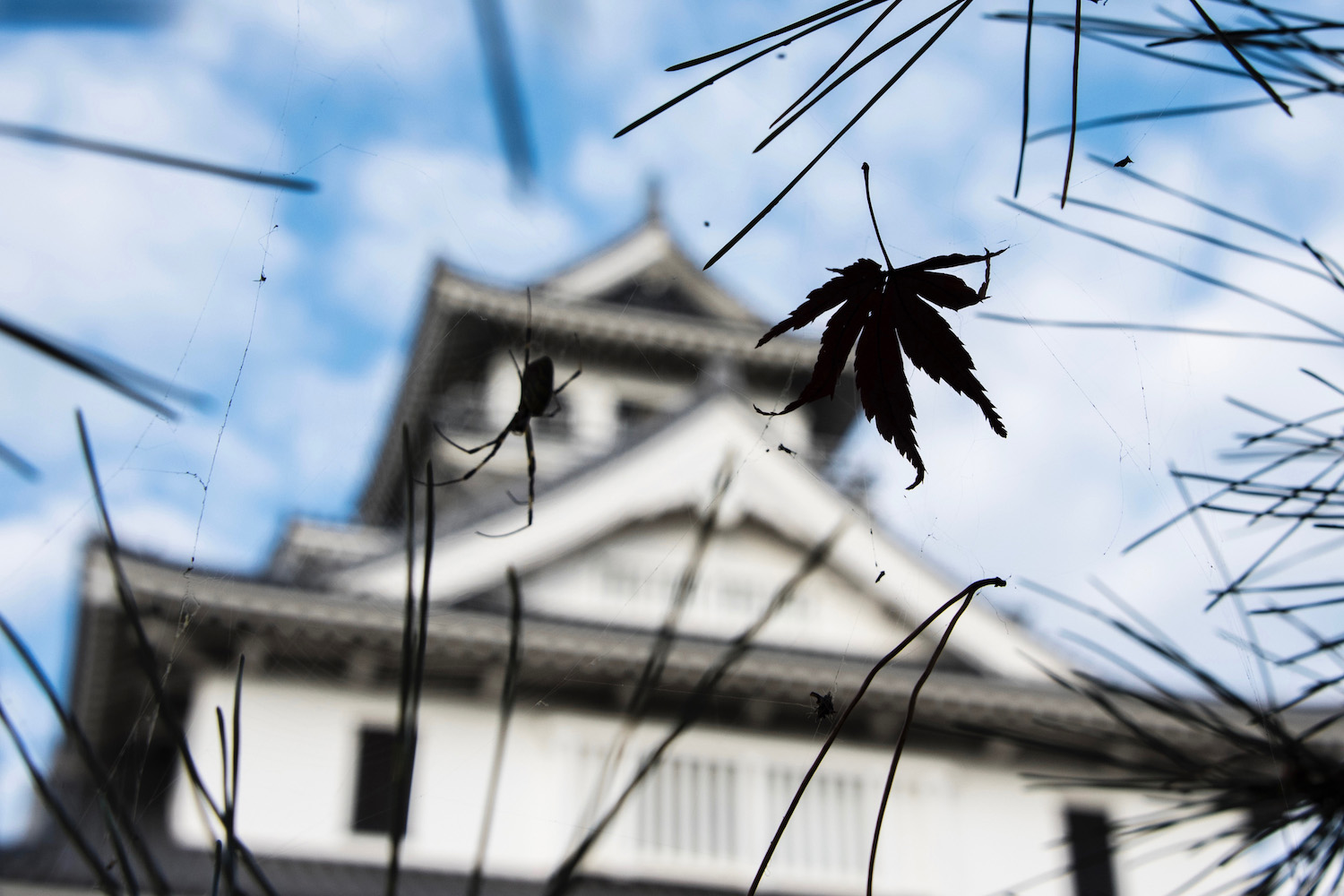
My mood also soured when the sheet of clouds that had glowed pink and purple at daybreak proceeded to cover the entirety of the sky and turn white. If you’ve read any of my recent articles over on Leave Your Daily Hell, you know that questionable weather has been the bane of my travel existence this year.
At any rate, I spent about an hour in the vicinity of Nagahama Castle, whose surrounding garden boasted a great deal red and yellow foliage, in spite of the hideous sky and the edifice’s somewhat uninspiring backstory. As I turned to leave, I spotted an Orb Weaver sleeping in a pine tree where I assumed it would soon be building a web.
The image—the spider had strung a scarlet maple leaf beside it with a thread of silk—was captivating, but clouds were still gathering over Lake Biwa, and I still needed to get to Hikone City. And soon: Hyperdia did a repeat of that morning in Kyoto, and recommended a train that was leaving in mere moments.

I bid my arachnid friend farewell and made my second mad dash for the second station of the day. As the locomotive sped southward, the sky cleared completely.
Prime and Forbidden
While the real Nagahama Castle had been all but deserted, the one in Hikone is a legitimately feudal structure—one of only 12 in all of Japan with its original keep—that dates back to the turn of the 17th century, when the Tokugawa daimyo Ii Naokatsu unexpectedly received had a large tract of land. Hikone Castle is something of an architectural Frankenstein’s monster, which a keep stolen from the castle that still stands in Otsu and bricks from the ruins of Sawayama Castle, which Naokatsu’s father destroyed.
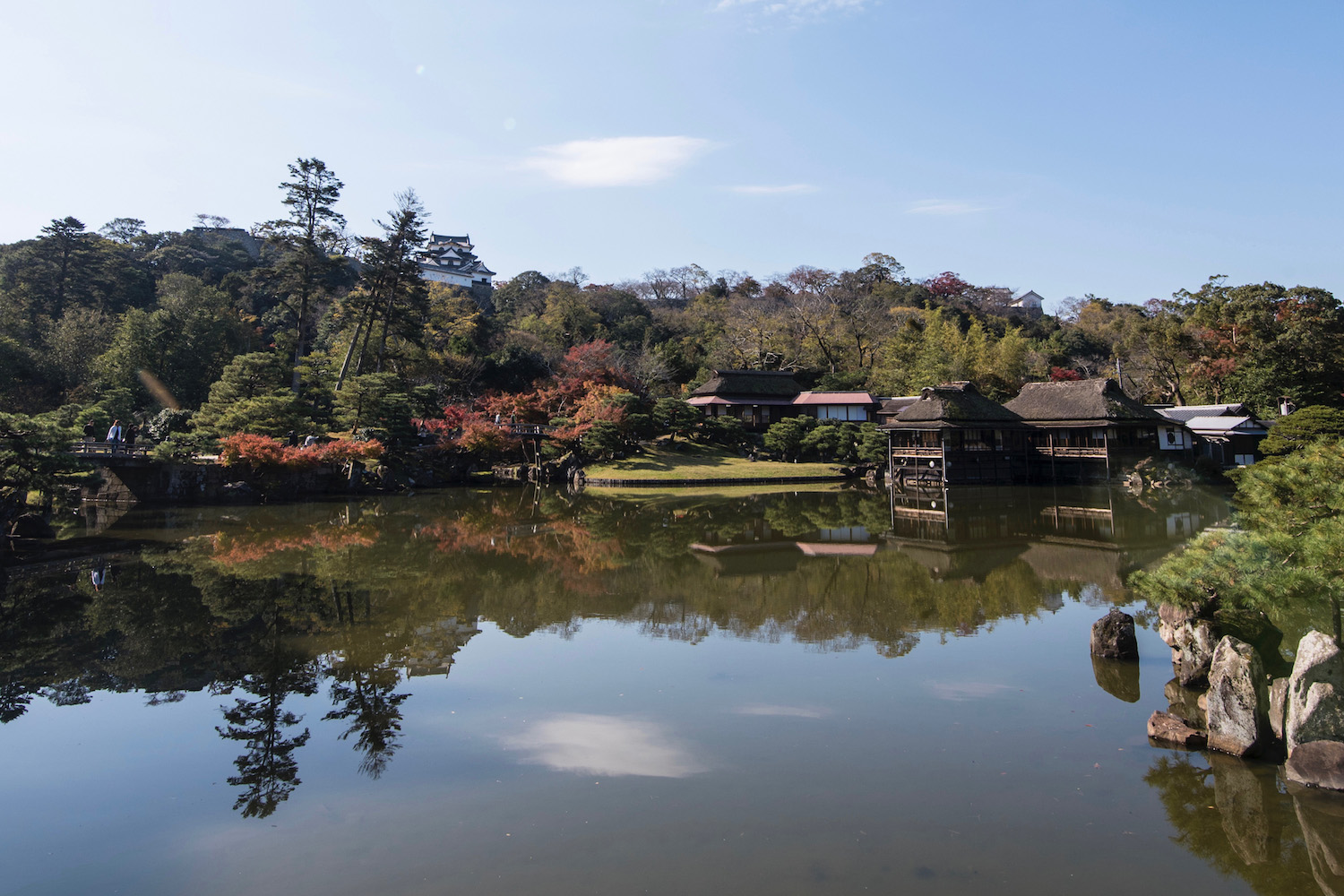
Not that I’d have much of a chance to scrutinize the construction: I only had the place to myself (well, minus a few random Japanese couples and families) for about 30 minutes, at which point the first of several tour bases packed with mainland Chinese unloaded.
When it came to the first busload, a performance given by some strange mascot occupied them completely while I set up my tripod. Hikone, it seems, doesn’t have the same policy as Kyoto in this regard.
Eventually the castle mount did become saturated past the point of finding serenity, which inspired me to head down to Genkyuen Garden, though I can’t remember if it was the second bus full of Chinese tourists that did it, or the third one.
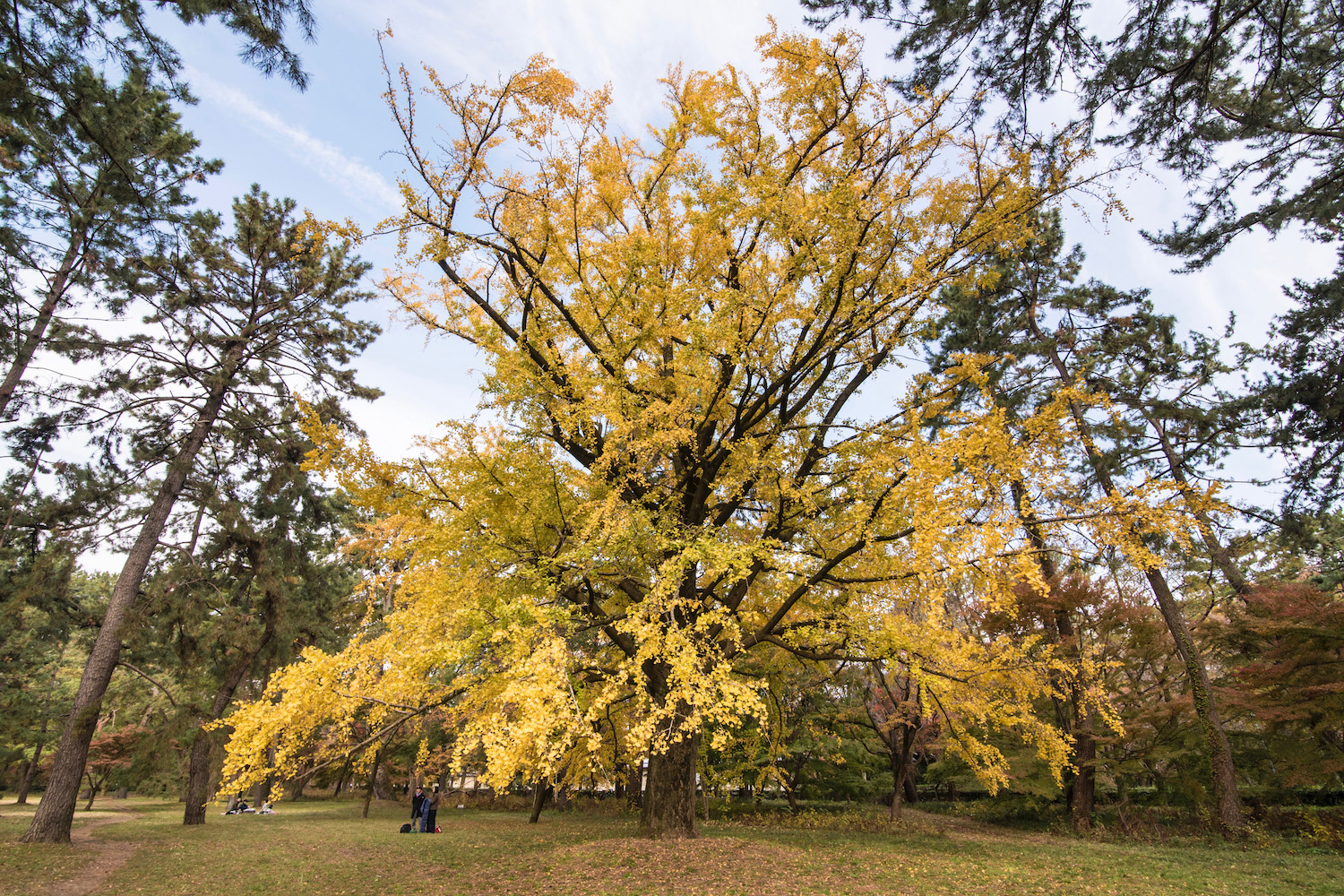
There, an older Japanese photographer showed me kindness in a most unprecedented way: By breaking the rules for me, at a most opportune time no less. I was just about to pack up and board a Hikone to Kyoto train when he directed me behind a “No Entry” sign, allowing me to stand in the prime (and forbidden) spot so that he wouldn’t have to move. I felt like Ii Naokatsu, suddenly gifted with real estate I’d done absolutely nothing to earn.
Best Sunset View
Hikone Castle is a stunning place, make no mistake, but it doesn’t compare to the most impressive locales in the heart of Kyoto. It was (probably) sunny there, too, and I feel a deep desire to get back, and make up for the Saturday I’d wasted, creatively speaking, atop Mt. Koya.
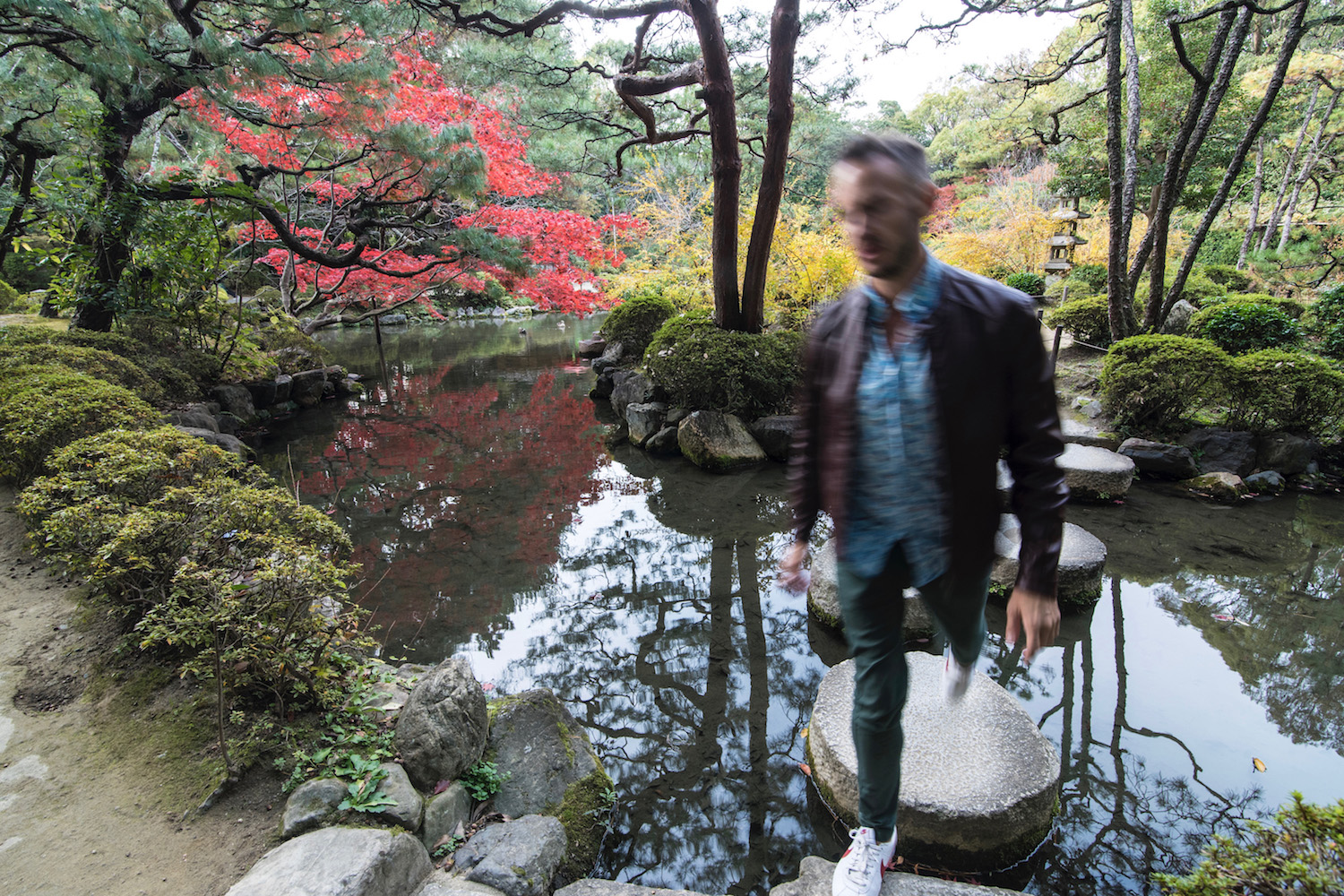
I began the process of righting this wrong Shosei-en, which has long been one of my favorite gardens in Kyoto—I lovingly refer to as the “Kyoto Tower Garden,” since the structure is visible during most of one’s stroll through it.
Next I headed to Kyoto Imperial Palace, whose sprawling grandeur is a far cry from humble Hikone Castle, but in the best possible way. I think it might be the city’s underrated fall color spot, and in any season is more overlooked than it should be.
Certainly, it’s more impressive than Tokyo Imperial Palace—you know, where the Emperor actually lives—if only because of the massive ginkgo wedged between the main Palace grounds and Sento-Gosho garden.

A walk through the garden of Heian Shrine, which was built in 1895 to commemorate Kyoto’s 1100th birthday and is also somewhat overlooked by the typical travel, followed. Finally, I traipsed through the crowded Higashiyama district to the parking lot of Kodai-ji temple, where a random person on the internet had said I could enjoy the best sunset view of Yasaka Pagoda.
The Bottom Line
The view was awful, but I was resourceful and quick-thinking enough to make the stranger’s failing obsolete: I jog-hiked up to Ryozen Gokuku Shrine, where a fiery sunset blazed over Yasaka Pagoda, with Kyoto Tower lighting up behind it no less. It was a stunning sight to behold, but also a vindicating one: I’d spent the entire day fearing that my earlier-than-planned foray to Hikone Castle had cost me one of the pink-sky photos that are all-too-rare in my travels—a final blessing from from the daimyo, perhaps.
Other FAQ About Hikone Castle
What was Hikone Castle used for?
Although it sounds boring, Hikone Castle served mainly as a center for administration of the Hikone domain that ruled over modern Shiga prefecture during the 17th century. As evidenced by the fact that it’s still mostly intact, Hikone Castle did not fulfill much of a role in actual battle.
Who lived in Hikone Castle?
As is the case with every feudal castle in Japan, the Daimyo (or feudal lord) resided at Hikone Castle. Given Hikone Castle’s advanced age, we know that many different Daimyo have lived here over the course of the castle’s existence.
How old is Hikone Castle?
In 2022, Hikone Castle (which was built in 1622) will celebrate its 400th birthday. If you’re able to visit Japan during that year, it’s likely that certain activities will be taking place on the castle grounds to commemorate the important anniversary.



